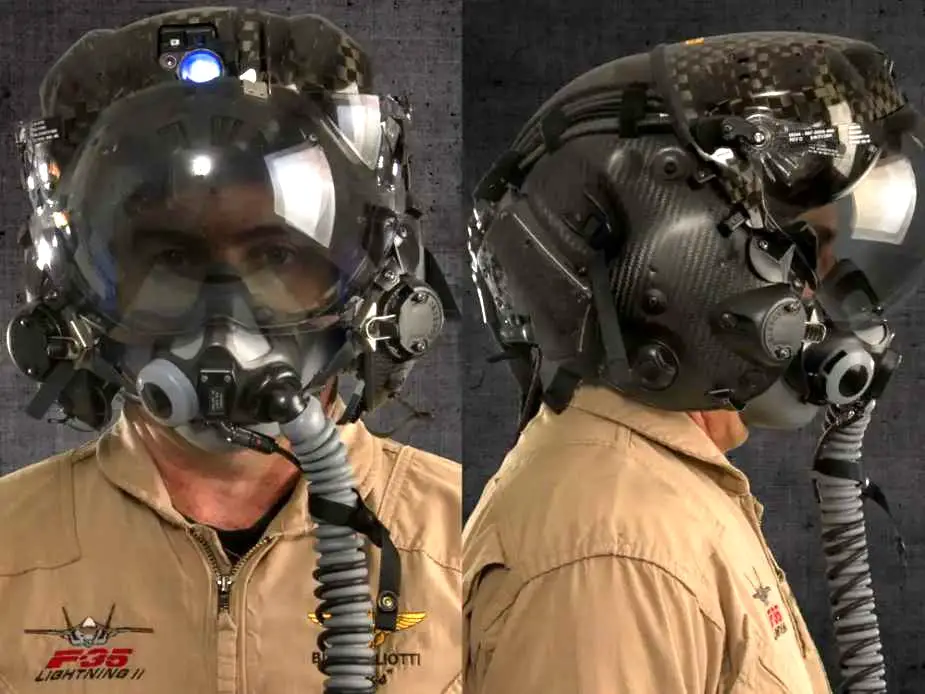Breaking news
Lockheed Martin gets US DoD contract for Lot 17 helmet-mounted display requirements in support of F-35.
The U.S. Department of Defense on December 12 announced that Lockheed Martin, Fort Worth, Texas, is awarded a $174,635,020 firm-fixed-price modification to a previously awarded indefinite-delivery/indefinite-quantity contract. This modification exercises an option to procure Lot 17 helmet-mounted display requirements in support of the F-35 Joint Strike Fighter aircraft for the Air Force, Marine Corps, Navy, F-35 Cooperative Program Partners, and Foreign Military Sales customers.
Follow Air Recognition on Google News at this link
 Lockheed Martin's Helmet Mounted Display Systems (HMDS) is designed to give F-35 pilots unprecedented situational awareness by displaying airspeed, altitude, targeting information, and threat warnings on the helmet's visor (Picture source: Lockheed Martin)
Lockheed Martin's Helmet Mounted Display Systems (HMDS) is designed to give F-35 pilots unprecedented situational awareness by displaying airspeed, altitude, targeting information, and threat warnings on the helmet's visor (Picture source: Lockheed Martin)
Work will be performed in Fort Worth, Texas, and is expected to be completed in February 2028. No funds will be obligated at the time of award; funds will be obligated on individual orders as they are issued. Naval Air Systems Command, Patuxent River, Maryland, is the contracting activity.
Lockheed Martin's Helmet Mounted Display Systems (HMDS) is designed to give F-35 pilots unprecedented situational awareness by displaying airspeed, altitude, targeting information, and threat warnings on the helmet's visor. The helmet component connects to the Distributed Aperture System (DAS) system in the aircraft, which gives pilots a God's-eye view of the battlespace, as written by Amanda Macias in Business Insider. "I have six cameras around the aircraft called DAS, and with a flip of a switch I can put it to my helmet and have a full 360-degree view of what I'm seeing", said US Air Force Maj. Will "D-Rail" Andreotta, commander of the F-35A Lightning II Heritage Flight Team.
US Air Force Brig. Gen. Scott Pleus, director of the F-35 integration office and former commander of the 56th Fighter Wing at Luke Air Force Base, said that tasks in the F-35 cockpit are "unbelievably simplified" due to the helmet. "There's no focusing, changing batteries. There's no getting things on and off in the cockpit. There's one button you press on the stick and it turns on," said Pleus, who has flown both the F-16 and F-35. "You just climb to the airplane like you would normally do. You turn on the helmet like you normally do, and all you do is turn the night-vision camera on when you're ready to have your night-vision camera, and when you're done you turn it off. That's it."
 Maj. Gen. Jay Silveria, US Air Force Warfare Center commander, connects his oxygen mask to his helmet prior to his final qualifying flight in the F-35A Sept. 26, 2014, at Eglin AFB (Picture source: US Air Force)
Maj. Gen. Jay Silveria, US Air Force Warfare Center commander, connects his oxygen mask to his helmet prior to his final qualifying flight in the F-35A Sept. 26, 2014, at Eglin AFB (Picture source: US Air Force)

























